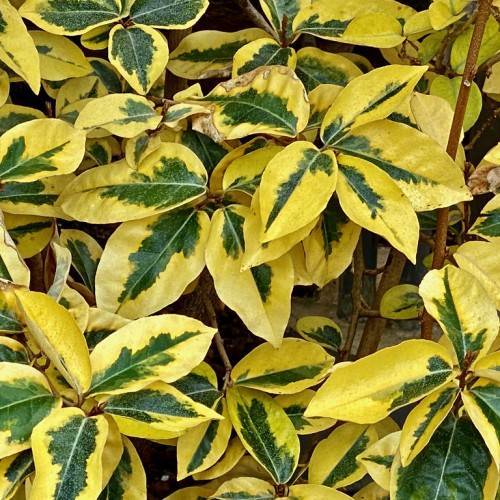
elaeagnus
Elaeagnus x ebbingei
Also Known As - Ebbinge's silverberryCycle:
Perennial
Watering:
Minimum
Hardiness Zone:
7
Flowers:
Flowers In Autumn
Sun:
Full sun, Part sun/part shade
Soil:
Acidic, Well-drained
Fruits:
Fruits In Spring Ready In Fall
Edible:
Yes
Leaf:
Yes
Growth Rate:
Moderate
Maintenance:
Low
Salt Tolerant:
Yes
Thorny:
Yes
Invasive:
Yes
watering
Elaeagnus (Elaeagnus x ebbingei) should be watered once a week in the summer, and once every 2 weeks in the winter. Depending on the weather, you may need to water your Elaeagnus more often. When watering, give it a deep, thorough soaking, making sure the soil is damp but not wet. When the top inch or so of soil becomes dry, it's time to water. If you have Elaeagnus growing in a pot, you may need to water it more often. The potting soil can become dry more quickly than soil in the ground, so keep an eye on it, and water it as needed.
sunlight
Elaeagnus (Elaeagnus x ebbingei) prefers full sun to partial shade exposure and performs best in well-drained soils. The plant should receive 4 to 6 hours of direct sun daily, preferably in the morning and early afternoon. When planted in an area of full shade or heavy shade, elaeagnus will not reach its full potential and may become spindly or suffer from stunted growth.
pruning
Elaeagnus (Elaeagnus x ebbingei) should be pruned twice a year in late winter or early spring and again in summer. Pruning in late winter/early spring should be done before new growth begins. Pruning in summer should be done after flowering, around mid- to late summer. When pruning, only about 1-third of the previous years' growth should be removed. Dead, diseased, or damaged branches should always be removed. Excessive pruning can cause dieback, so pruning should be done with caution and only when necessary. In most cases, light thinning of branches to improve air circulation and to open up the plant's canopy is all that is necessary.
